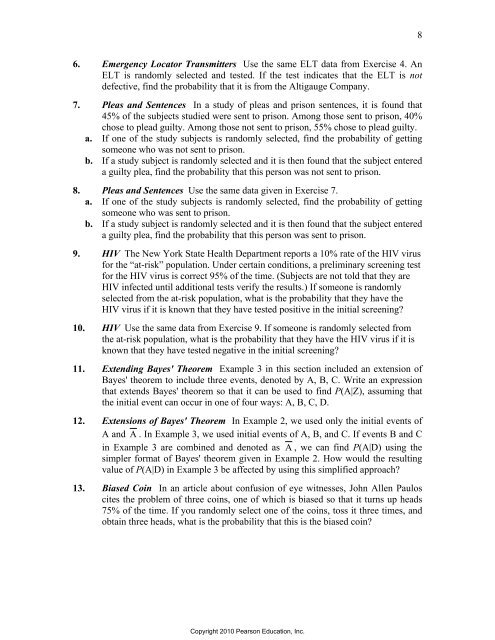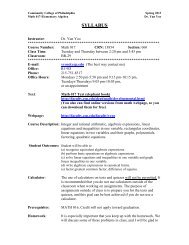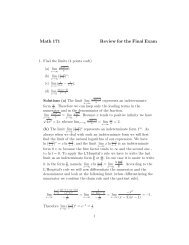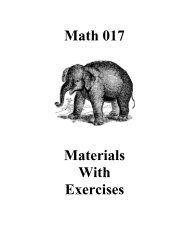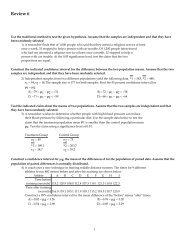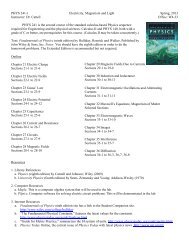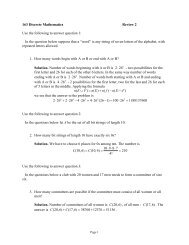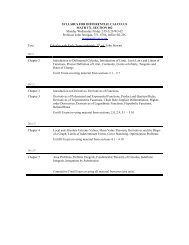Bayes' Theorem
Bayes' Theorem
Bayes' Theorem
- No tags were found...
Create successful ePaper yourself
Turn your PDF publications into a flip-book with our unique Google optimized e-Paper software.
86. Emergency Locator Transmitters Use the same ELT data from Exercise 4. AnELT is randomly selected and tested. If the test indicates that the ELT is notdefective, find the probability that it is from the Altigauge Company.7. Pleas and Sentences In a study of pleas and prison sentences, it is found that45% of the subjects studied were sent to prison. Among those sent to prison, 40%chose to plead guilty. Among those not sent to prison, 55% chose to plead guilty.a. If one of the study subjects is randomly selected, find the probability of gettingsomeone who was not sent to prison.b. If a study subject is randomly selected and it is then found that the subject entereda guilty plea, find the probability that this person was not sent to prison.8. Pleas and Sentences Use the same data given in Exercise 7.a. If one of the study subjects is randomly selected, find the probability of gettingsomeone who was sent to prison.b. If a study subject is randomly selected and it is then found that the subject entereda guilty plea, find the probability that this person was sent to prison.9. HIV The New York State Health Department reports a 10% rate of the HIV virusfor the “at-risk” population. Under certain conditions, a preliminary screening testfor the HIV virus is correct 95% of the time. (Subjects are not told that they areHIV infected until additional tests verify the results.) If someone is randomlyselected from the at-risk population, what is the probability that they have theHIV virus if it is known that they have tested positive in the initial screening?10. HIV Use the same data from Exercise 9. If someone is randomly selected fromthe at-risk population, what is the probability that they have the HIV virus if it isknown that they have tested negative in the initial screening?11. Extending <strong>Bayes'</strong> <strong>Theorem</strong> Example 3 in this section included an extension of<strong>Bayes'</strong> theorem to include three events, denoted by A, B, C. Write an expressionthat extends <strong>Bayes'</strong> theorem so that it can be used to find P(A|Z), assuming thatthe initial event can occur in one of four ways: A, B, C, D.12. Extensions of <strong>Bayes'</strong> <strong>Theorem</strong> In Example 2, we used only the initial events ofA and A . In Example 3, we used initial events of A, B, and C. If events B and Cin Example 3 are combined and denoted as A , we can find P(A|D) using thesimpler format of <strong>Bayes'</strong> theorem given in Example 2. How would the resultingvalue of P(A|D) in Example 3 be affected by using this simplified approach?13. Biased Coin In an article about confusion of eye witnesses, John Allen Pauloscites the problem of three coins, one of which is biased so that it turns up heads75% of the time. If you randomly select one of the coins, toss it three times, andobtain three heads, what is the probability that this is the biased coin?Copyright 2010 Pearson Education, Inc.


